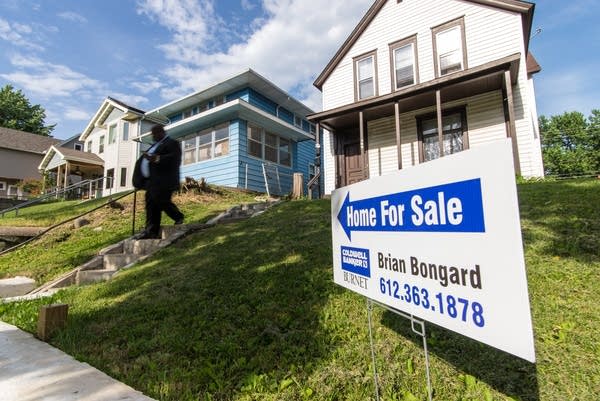Harvard study: Twin Cities housing spendy and scarce, better than some metros

Realtor Nene Matey-Keke of RNR Realty leaves a home after a showing on Westminster Street in St. Paul, Minn.
Tom Baker for MPR News 2017
Go Deeper.
Create an account or log in to save stories.
Like this?
Thanks for liking this story! We have added it to a list of your favorite stories.


